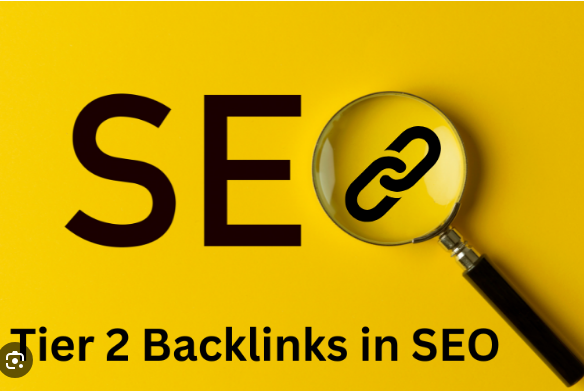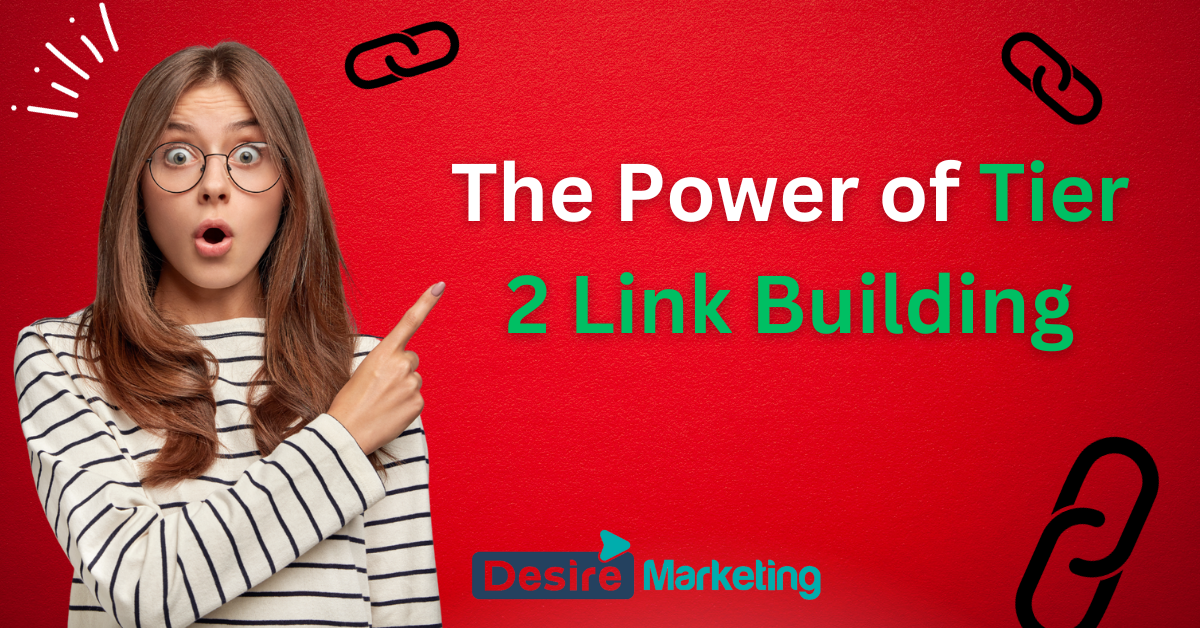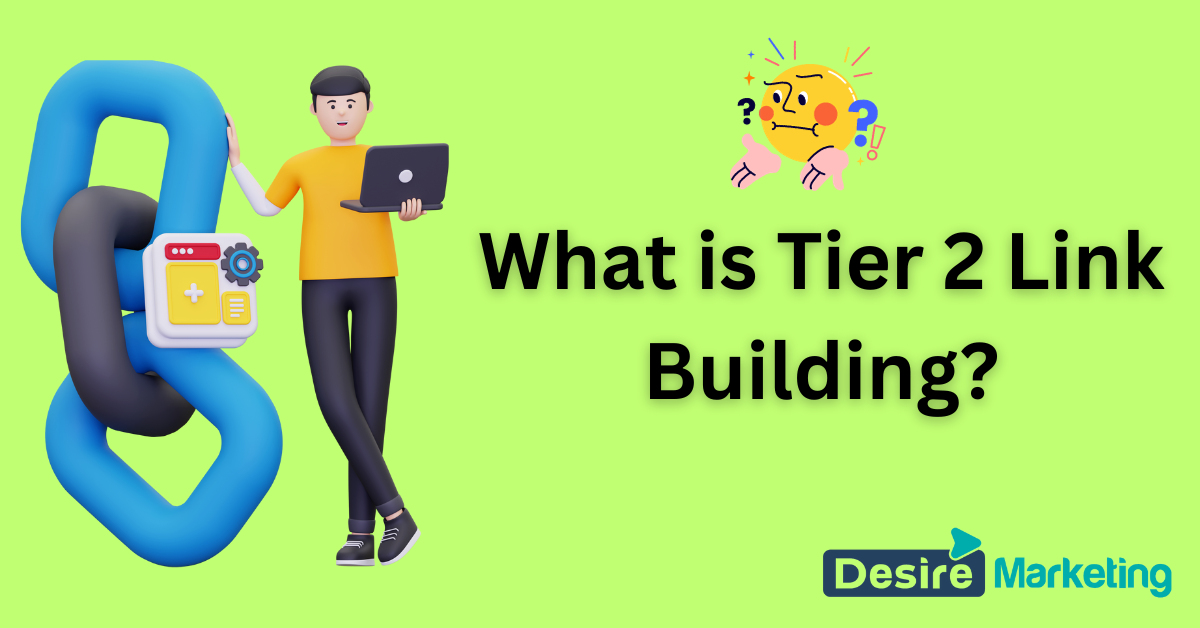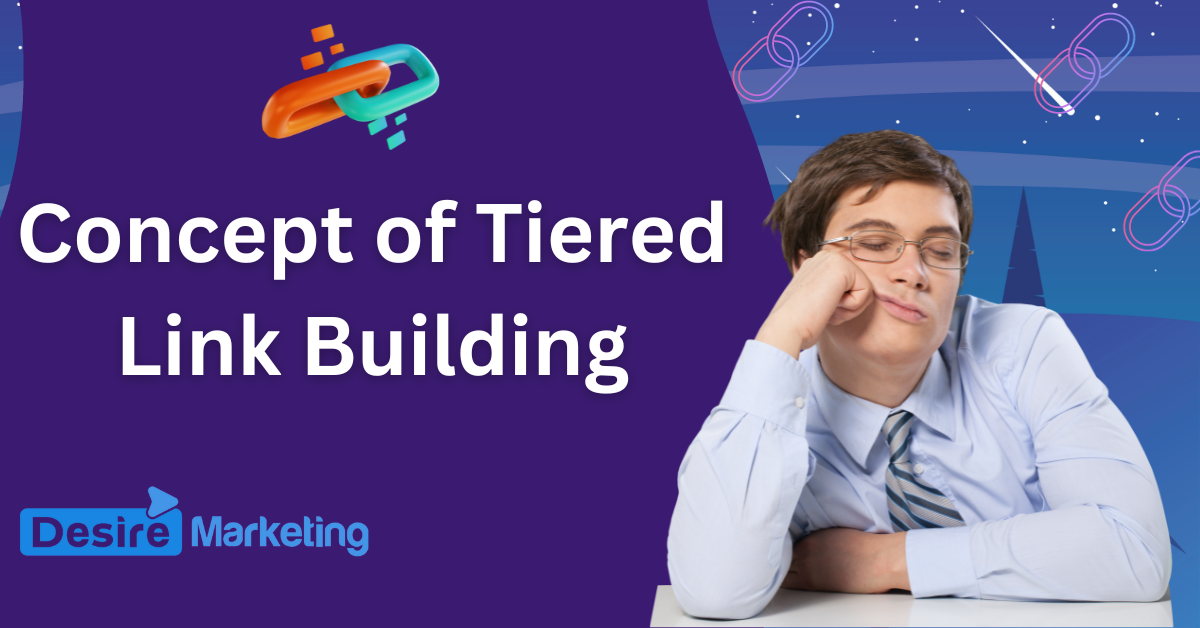If you’re looking to improve your website’s search engine ranking, then you’re probably familiar with the importance of backlinks. Backlinks are links from other websites that point to your website, and they are a key factor in determining your website’s authority and relevance. But did you know that there are different types of backlinks and that some are more valuable than others? Tier 2 backlinks are a lesser-known but highly effective strategy for boosting your website’s ranking.
Tier 2 backlinks are links from websites that are already linked to your website, creating a “second tier” of backlinks. These backlinks are not as powerful as first-tier backlinks, which are direct links from other websites to your website. However, tier 2 backlinks can still have a significant impact on your website’s ranking, as they help to reinforce the authority and relevance of your first-tier backlinks. By building a strong network of tier 2 backlinks, you can improve your website’s overall link profile and increase your chances of ranking higher in search engine results pages (SERPs).
Despite their hidden value, many website owners overlook tier 2 backlinks in their link-building strategies. However, with the right approach, tier 2 link building can be a powerful tool for improving your website’s ranking and driving more traffic to your site. In this article, we’ll take a closer look at the benefits of tier 2 link building, as well as some tips and best practices for implementing this strategy effectively.
What is Tier 2 Link Building?
When it comes to link building, Tier 2 link building is one of the most discussed and debated practices in the SEO industry. In simple terms, Tier 2 link building refers to the process of building backlinks to the backlinks that point to your website.
To understand Tier 2 link building, it is important to know what Tier 1 links are. Tier 1 links are high-quality links that point directly to your website. These links are often from authoritative websites and are considered to be the most valuable links for your website’s SEO strategy.
Tier 2 links, on the other hand, are built to the Tier 1 links. These links are not as high-quality as Tier 1 links, but they can still provide value to your website’s SEO strategy. The idea behind Tier 2 link building is to increase the authority of the Tier 1 links, which in turn will boost the authority of your website.
One of the benefits of Tier 2 link building is that it helps to diversify your link profile. By building links to the Tier 1 links, you are creating a more natural and diverse link profile, which can help to improve your website’s search engine rankings.
It is important to note that Tier 2 link building should not be used as a substitute for Tier 1 link building. Tier 1 links should always be the focus of your link-building efforts. However, Tier 2 link building can be a valuable addition to your SEO strategy, especially if you are looking to boost the authority of your website.
In summary, Tier 2 link building is the process of building links to the Tier 1 links that point to your website. While Tier 2 links are not as high-quality as Tier 1 links, they can still provide value to your website’s SEO strategy by increasing the authority of the Tier 1 links and diversifying your link profile.
Tiered Link Building
If you want to improve your website’s search engine ranking, then you need to implement effective SEO strategies. One such strategy is tiered link building. In this section, we will discuss the concept of tiered link building and the different types of links involved.
Concept of Tiered Link Building
Tiered link building involves creating a network of backlinks that point to your website. The idea is to build a pyramid of links, with the tier 1 links at the top and the tier 3 links at the bottom. Tier 1 links are the most important links, as they come from high-authority websites and provide the most value to your website’s search engine rankings. Tier 2 links are built on top of tier 1 links, and tier 3 links are built on top of tier 2 links.
Tier 1 Links
Tier 1 links are the highest quality links in a tiered link-building strategy. These links come from websites with high domain authority and provide the most value to your website’s search engine rankings. Examples of tier 1 links include:
- Guest posts on high-authority websites
- Editorial links from news websites
- Links from high-authority blogs
When building tier 1 links, it is important to focus on quality over quantity. A few high-quality links are better than many low-quality links.
Tier 2 Links
Tier 2 links are built on top of tier 1 links and provide additional value to your website’s search engine rankings. These links are not as high-quality as tier 1 links, but they still play an important role in a tiered link-building strategy. Examples of tier 2 links include:
- Social media profiles
- Web 2.0 sites
- Article directories
When building tier 2 links, it is important to focus on relevance. The links should be related to your website’s niche and provide value to your audience.
Tier 3 Links
Tier 3 links are built on top of tier 2 links and provide the least value to your website’s search engine rankings. These links are typically low-quality and are used to support the higher tiers of links. Examples of tier 3 links include:
- Forum comments
- Blog comments
- Directory submissions
When building tier 3 links, it is important to focus on quantity. You should aim to build as many links as possible, as long as they are not spammy or low-quality.
Tiered link building is an effective SEO strategy that can help improve your website’s search engine rankings. By building a pyramid of high-quality links, you can increase your website’s authority and visibility in search engine results pages.
The Hidden Value of Tier 2 Link Building
If you’re looking to boost your website’s search engine rankings, Tier 2 link building is a strategy that you should consider. While Tier 1 links are the most important backlinks for your website, Tier 2 links can provide a hidden value that can help you achieve better rankings.
Role of Tier 2 Links in SEO

Tier 2 links are second-tier links that point to your website from other high-quality websites. These links are not as powerful as Tier 1 links, but they can still provide a significant boost to your website’s rankings. The main role of Tier 2 links is to enhance the value of your Tier 1 links. By building high-quality Tier 2 links, you can improve the page authority of your Tier 1 links, which can help them rank higher in the search engine results pages (SERPs).
Boosting Page Authority with Tier 2 Links
Page authority is a metric that measures the strength of a single page on your website. By building Tier 2 links to your website’s pages, you can boost their page authority, which can help them rank higher in the SERPs. When your pages have higher page authority, they are more likely to be crawled and indexed by Google, which can drive more traffic to your website.
Enhancing Link Equity with Tier 2 Links
Link equity is a metric that measures the value of all the links pointing to your website. By building high-quality Tier 2 links, you can enhance your website’s link equity, which can help improve your website’s overall rankings. When your website has higher link equity, it is more likely to be considered an authoritative source by Google, which can lead to better rankings in the SERPs.
Quality Over Quantity
When it comes to tier 2 link building, quality should always be prioritized over quantity. Building low-quality links can actually harm your website’s ranking rather than improve it. In this section, we’ll explore the dangers of low-quality links and the significance of high-quality backlinks.
Effective Tier 2 Link Building Strategies
If you want to improve your website’s ranking, you need to focus on building high-quality links. Tier 2 link building is an effective strategy that can help you achieve this goal. In this section, we will discuss three effective Tier 2 link-building strategies: Guest Posting, Social Media Engagement, and Directory and Profile Links.
Guest Posting
Guest posting is a popular link-building strategy that involves writing and publishing articles on other websites. This strategy can help you build high-quality backlinks to your website. When you write a guest post, you can include a link to your website in the author bio or within the content of the article. To be effective, your guest post should be informative, engaging, and relevant to the website’s audience.
To find websites that accept guest posts, you can use Google search operators such as “write for us” or “guest post.” You can also use guest post outreach tools to find websites that are interested in publishing guest posts. When you reach out to website owners, make sure to introduce yourself and explain why your guest post would be a good fit for their website.
Social Media Engagement
Social media engagement is another effective Tier 2 link-building strategy. By engaging with your target audience on social media, you can build relationships and drive traffic to your website. When you share your website content on social media, make sure to include a link to your website. You can also engage with other users by commenting on their posts, sharing their content, and participating in online conversations.
To be effective, your social media strategy should be focused on building relationships and providing value to your audience. You should also be consistent in your social media activity and engage with your audience on a regular basis.
Directory and Profile Links
Directory and profile links are another effective Tier 2 link-building strategy. These links involve creating profiles on directory websites or social media platforms and including a link to your website. When you create a profile, make sure to include a complete and accurate description of your business, along with your website URL.
To find directory websites or social media platforms that are relevant to your niche, you can use Google search operators such as “directory” or “profile.” You can also use directory submission tools to automate the process of creating directory links.
Effective Tier 2 link-building strategies include guest posting, social media engagement, and directory and profile links. By implementing these strategies, you can build high-quality backlinks to your website and improve your search engine ranking.
How to Find Tiered Link Building Opportunities
Here’s a few step to find tiered link building opportunities:
- Identify Your Primary Backlinks:
- Start by identifying the existing backlinks to your website. Tools like Ahrefs, SEMrush, or Moz can help you discover these links.
- Focus on high-quality backlinks from authoritative sites, as strengthening these will yield the best results.
- Assess the Quality of the Primary Backlinks:
- Evaluate the authority, relevance, and quality of the sites linking to you. High-quality, relevant sites are the best candidates for tiered link building.
- Check if these sites have good traffic, a clean profile, and are not spammy.
- Find Secondary Link Opportunities:
- Look for blogs, forums, or other websites that are relevant to the topics covered by your primary backlink sources.
- Use tools like Google Search, BuzzSumo, or similar platforms to find sites where you can create content or participate in discussions.
- Create or Earn Secondary Links:
- Create valuable content or engage in community discussions on platforms that are relevant to your primary backlink sources.
- Ensure that the content you create or the discussions you participate in are valuable and relevant, to naturally earn a secondary link.
- Monitor and Adjust:
- After creating tiered links, monitor the performance of your primary backlinks.
- Use analytics tools to track changes in traffic, rankings, and the overall authority of your primary backlinks.
- Stay Within Google’s Guidelines:
- It’s crucial to remember that any link-building strategy should adhere to Google’s Webmaster Guidelines to avoid penalties.
- Focus on creating value and relevancy rather than merely trying to manipulate search rankings.
- Diversify Your Strategy:
- Don’t rely solely on tiered link building. Incorporate it as part of a broader, more diverse SEO strategy.
- Consider the User Experience:
- Always keep the user experience in mind. Links should provide value to the user, not just search engines.
Monitoring and Optimizing Your Link Profile
As you build your Tier 2 link profile, it is important to monitor and optimize it regularly to ensure that it is helping, not hurting, your website’s ranking. Here are some tips to help you monitor and optimize your link profile effectively.
Using SEO Tools for Monitoring
One of the best ways to monitor your link profile is to use SEO tools such as Ahrefs. These tools can help you track your website’s Domain Rating (DR), which is a measure of your website’s overall backlink profile strength. You can also use these tools to monitor your outbound links, identify any broken links, and track your website’s ranking for specific keywords.
Measuring the Success of your Tier 2 Backlinks
Here’s how you can evaluate the effectiveness of your Tier 2 links:
- Monitor Traffic to Your Primary Backlinks:
- Use analytics tools to track the traffic flowing to your primary backlinks (Tier 1 links). An increase in traffic can indicate that your Tier 2 links are effectively driving more visibility to these primary backlinks.
- Check the Improvement in Search Rankings:
- Observe any changes in the search engine rankings of the web pages containing your primary backlinks. An improvement in rankings can be a direct outcome of strengthened Tier 1 links through your Tier 2 efforts.
- Assess the Domain Authority of Primary Backlinks:
- Tools like Moz’s Domain Authority or Ahrefs’ Domain Rating can help you track any improvements in the authority of the websites hosting your primary backlinks. Higher authority can suggest a positive impact from your Tier 2 link building.
- Evaluate Referral Traffic:
- Analyze the referral traffic coming to your main website. An increase in referral traffic from your primary backlink sources can be a good indicator of effective Tier 2 link building.
- Track Link Value:
- Use tools like Ahrefs or Majestic to monitor the ‘link value’ or ‘link equity’ that is passing through your Tier 2 links to your primary backlinks, and eventually to your main site.
- Observe Changes in Page Authority:
- Monitor the Page Authority (PA) of the pages containing your primary backlinks. An increase in PA can suggest that your Tier 2 efforts are bolstering the strength of these pages.
- Keep an Eye on Organic Search Traffic:
- Monitor your overall organic search traffic. While it’s challenging to attribute traffic increases directly to Tier 2 link building, a correlating increase can be a positive sign.
- Engagement Metrics:
- Look at engagement metrics like bounce rate, average session duration, and pages per session for traffic coming from your primary backlinks. Improvements in these metrics can indicate higher quality traffic, possibly influenced by effective Tier 2 links.
- Long-Term Performance Tracking:
- SEO and link building are long-term strategies. Track the performance over several months to get a clear picture of the impact.
- Competitor Analysis:
- Compare your performance with competitors. If your site is gaining ground or outperforming competitors in key metrics, your link building efforts might be a contributing factor.
Avoiding Penalties and Spammy Practices
To avoid penalties and spammy practices, it is important to build your Tier 2 link profile using legitimate methods. Avoid using Private Blog Networks (PBNs) or forum links, as these are often seen as spammy and can result in penalties. Instead, focus on manual link building and other legitimate methods to improve your link profile.
When building your Tier 2 links, make sure to focus on quality over quantity. Avoid using automated link-building tools and instead focus on building relationships with other website owners and bloggers in your niche. This will help you build a more natural and diverse link profile, which is less likely to be penalized by search engines.
Finally, make sure to regularly audit your link profile to identify any spammy or low-quality links. You can use tools like Ahrefs to identify these links and then work to remove them or disavow them if necessary.
By monitoring and optimizing your link profile regularly, you can ensure that your Tier 2 link-building efforts are helping, not hurting, your website’s ranking.
Conclusion
Tier 2 link building is an essential part of off-page search engine optimization that can significantly boost your website’s ranking. By creating high-quality backlinks from referring domains, you can increase your website’s domain authority, which will help you outrank your competitors.
However, it’s important to note that not all tier 2 links are created equal. It’s crucial to avoid link wheel tactics that can harm your website’s ranking and reputation. Instead, focus on creating natural and relevant backlinks that provide value to your website’s visitors.
As search engine algorithms continue to evolve, it’s essential to stay up-to-date with the latest trends and best practices. By keeping an eye on your competitors and analyzing their backlink profiles, you can gain valuable insights into what’s working in your industry.
Remember, the key to success with tier 2 link building is to focus on quality over quantity. By creating a diverse and natural backlink profile, you can ensure that your website is receiving the maximum amount of link juice possible.
In summary, if you want to take your digital marketing strategy to the next level, it’s time to start incorporating tier 2 link building into your off-page SEO efforts. By following the best practices outlined in this guide, you can create a strong and sustainable backlink profile that will help your website rank higher in the search engine results pages.
Frequently Asked Questions
What is Tier 2 link building and how does it impact website ranking?
Tier 2 link building is the process of acquiring backlinks from websites that are not as high-quality as Tier 1 backlinks. Tier 2 backlinks can still provide value to your website by passing ranking authority and boosting the existing links. By acquiring Tier 2 backlinks, you can improve your website’s search engine ranking and increase your website’s visibility.
How do Tier 2 websites differ from Tier 1 websites in terms of link building?
Tier 2 websites are generally not as high-quality as Tier 1 websites. Tier 1 websites are typically authoritative and well-known websites, while Tier 2 websites are less authoritative and less well-known. Because Tier 2 websites are easier to obtain backlinks from, they can be a great way to boost your website’s ranking.
What are some effective strategies for obtaining Tier 2 backlinks?
Some effective strategies for obtaining Tier 2 backlinks include guest blogging, broken link building, and participating in online forums and communities. You can also reach out to websites in your niche and ask for a backlink. Remember to focus on quality over quantity when building Tier 2 backlinks.
Can PBN backlink sites be used for Tier 2 link building?
It is not recommended to use PBN (Private Blog Network) backlink sites for Tier 2 link building. PBNs are typically low-quality and spammy, and using them can result in penalties from search engines. Instead, focus on building high-quality Tier 2 backlinks from legitimate websites.
Is link building still a relevant ranking factor in SEO?
Yes, link building is still a relevant ranking factor in SEO. While there are many factors that contribute to search engine ranking, backlinks remain an important factor. By building high-quality backlinks, you can improve your website’s search engine ranking and increase your website’s visibility.
What are some alternatives to paid backlink software for Tier 2 link building?
Some alternatives to paid backlink software for Tier 2 link building include manual outreach, guest blogging, broken link building, and participating in online forums and communities. These methods require more effort and time, but they can be effective in building high-quality Tier 2 backlinks for your website.









